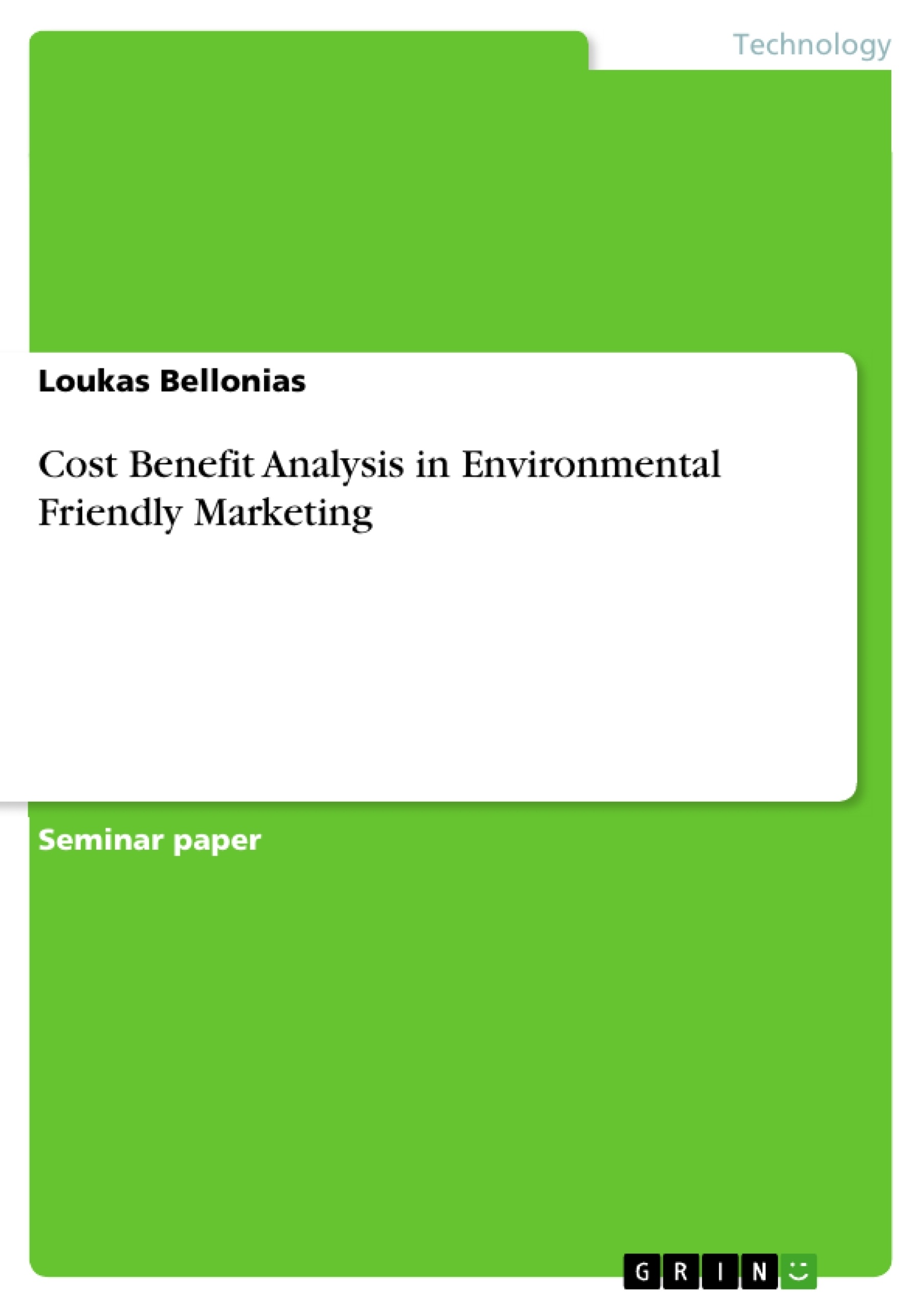In this article we first define and describe the concept and main points of environmental friendly marketing. We present the six important steps that must be followed to have a successful marketing strategy. We make a short introduction into cost benefit analysis, present the basic points of the cost benefit analysis theory and define the various types of benefits and costs.
As a conclusion, an example in the sector of “passive” houses (Niedrigenergiehäusern) is presented, in order to evaluate the options that a consumer has to choose from, when facing the residence dilemma.
[...]
Inhaltsverzeichnis (Table of Contents)
- Abstract
- Marketing and Environmental-Friendly Marketing
- Cost Benefit Theory
- Application of a Benefit Cost Analysis
- References
- Internet Resources
Zielsetzung und Themenschwerpunkte (Objectives and Key Themes)
This article aims to define and explain the concept of environmental-friendly marketing, highlighting its key components and its distinction from conventional marketing. The text explores the six crucial steps necessary for successful implementation of an environmentally conscious marketing strategy. Additionally, it provides an introduction to cost-benefit analysis, outlining its theoretical foundation and categorizing the various types of benefits and costs involved. The article concludes with a practical example in the field of energy-efficient homes (passive houses) to illustrate the decision-making process for consumers facing housing choices.
- Environmental-friendly marketing strategies and their key components
- Steps to ensure successful implementation of environmental-friendly marketing
- The theoretical underpinnings of cost-benefit analysis
- Categorization of benefits and costs in environmental-friendly marketing
- Application of cost-benefit analysis to real-world decisions (e.g., energy-efficient homes)
Zusammenfassung der Kapitel (Chapter Summaries)
The chapter on "Marketing and Environmental-Friendly Marketing" introduces the concept of environmentally conscious marketing, emphasizing its focus on minimizing ecological impacts throughout the product lifecycle while satisfying customer needs. This chapter contrasts environmental-friendly marketing with traditional marketing practices, highlighting the challenges and guidelines inherent in its implementation. It further outlines six key steps essential for successful environmental-friendly marketing, including the analysis of social and economic problems, customer demand analysis, and the ethical dimensions of environmentally conscious marketing practices. The chapter also delves into the segmentation of consumers based on their environmental awareness and willingness to engage in sustainable consumption.
The chapter on "Cost Benefit Theory" provides a theoretical framework for cost-benefit analysis, outlining the fundamental principles of this decision-making tool. This chapter explains the various types of benefits and costs involved in environmental-friendly marketing, offering a systematic approach to evaluating the economic and environmental implications of different marketing choices.
Schlüsselwörter (Keywords)
This article revolves around the key concepts of environmental-friendly marketing, cost-benefit analysis, and sustainability. It explores the challenges and strategies for successful implementation of environmental-friendly marketing practices, emphasizing the importance of social and economic considerations, customer demand analysis, and ethical principles. The article also touches on the concept of life cycle analysis (LCA) and the role of consumer awareness and willingness to engage in sustainable consumption. The text uses case studies and practical examples to illustrate the application of cost-benefit analysis in decision-making related to environmental-friendly marketing.
- Quote paper
- Dipl.-Wirtsch.-Ing. Loukas Bellonias (Author), 2008, Cost Benefit Analysis in Environmental Friendly Marketing, Munich, GRIN Verlag, https://www.hausarbeiten.de/document/118930


